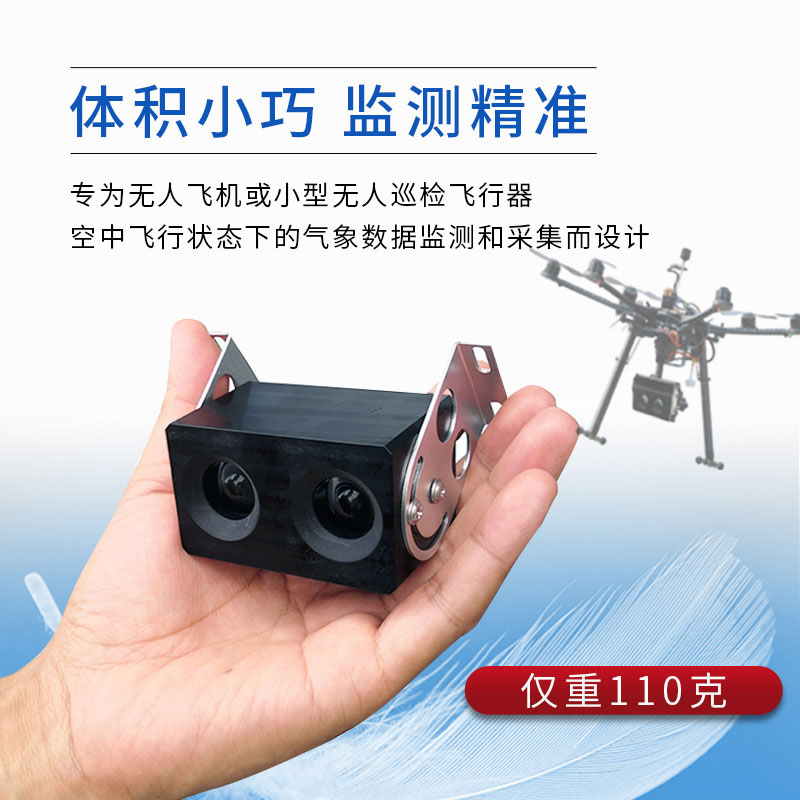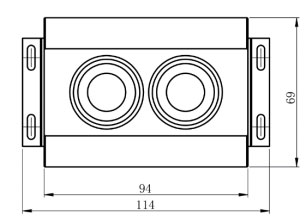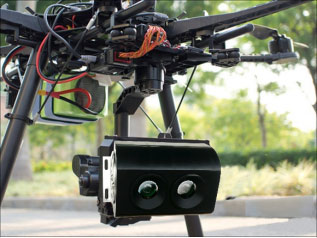Shandong Fengtu IOT Technology Co., Ltd
Sales Manager:Ms. Emily Wang
Cel,Whatsapp,Wechat:+86 15898932201
Email:info@fengtutec.com
Add:No. 155 Optoelectronic Industry Accelerator, Gaoxin District, Weifang, Shandong, China

Sales Manager:Ms. Emily Wang
Cel,Whatsapp,Wechat:+86 15898932201
Email:info@fengtutec.com
Add:No. 155 Optoelectronic Industry Accelerator, Gaoxin District, Weifang, Shandong, China

Model:FT-WJN4
Brand:fengtu
1.UAV visibility detector product features
UAV visibility detector is a professional optical instrument that converts the measured atmospheric extinction coefficient into meteorological visibility through backscattering.
1.The UAV visibility detector weighs only 110 grams and is designed for meteorological data monitoring and collection in the air flight of unmanned aircraft or small unmanned patrol vehicles;
2.It has a compact appearance, strong anti-electromagnetic interference and dustproof function, and can work normally in an altitude of 4,000 meters and minus 20 degrees;
3.The "four-ultra" visibility meter with ultra-mini appearance, ultra-low wind resistance, ultra-light weight and ultra-low power consumption has a power consumption of only 0.9 watts, making it very suitable for small drone platforms and flight control systems, as well as environmental monitoring using aircraft;
2.UAV visibility detector size and weight
Visibility dimensions: 94mm*69mm*42mm
Visibility + mounting bracket size: 114mm*69mm*73mm
Visibility weight: 110g
3.Main technical parameters of UAV visibility detector
Test range: 10-4000 meters
Measurement accuracy: ±15%
Light source: IR LED
Response time: 10 seconds
Digital output: RS485, RS232, SDI-12
Bluetooth output: BLE5.0 (optional)
Working temperature: -20-50°C
Working humidity: 0-95%
Supply voltage: VDC 12-24V
Power consumption: 0.9W
4.UAV visibility detector product size diagram and real image


Meteorological instrument modules are integrated sensor systems specifically designed to monitor and record a wide range of meteorological parameters. These modules typically contain multiple high-precision sensors capable of simultaneously measuring key meteorological elements such as temperature,...
Photovoltaic power generation is a crucial component of renewable energy, with solar cells serving as its core equipment. To evaluate the performance and efficiency of solar cells, the Portable IV Curve Tester is an essential tool. This article will introduce the principles, functions of the Portabl...
Nowadays, most city dwellers are not only concerned about daily weather changes, but also begin to pay attention to air quality. With the country's continued focus on environmental issues, environmental governance has become a priority for national and local governments. Large air quality monito...
The comprehensive instrument for measuring temperature, humidity and wind speed is Fengtu's handheld weather station, FT-SQ5A, which measures wind speed, wind direction, air temperature, humidity, atmospheric pressure, wind speed, wind direction, altitude (optional) and other elements based on t...